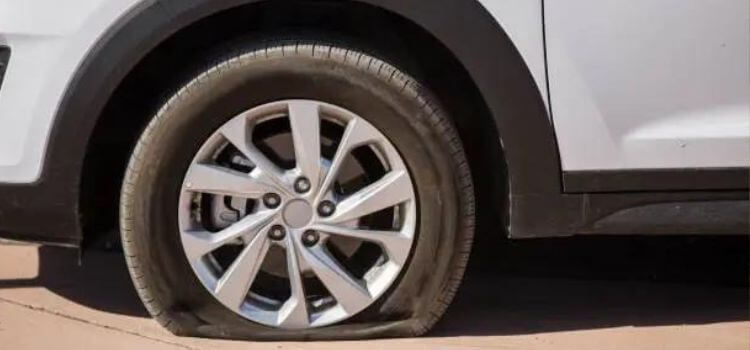As automotive enthusiasts and experts, we understand the concerns when your vehicle is left with a flat tire. The duration a car can sit on a flat tire without adverse effects is a common query among vehicle owners.

In this article, we’ll delve into the probable effects of prolonged flat tire situations and provide insights on minimizing damage to your vehicle.
Understanding the Basics
Before addressing the duration a car can safely sit on a flat tire, it’s essential to grasp the fundamentals. A flat tire appears when the tire loses air pressure, which can happen due to punctures, leaks, or gradual deflation. When a tire is flat, the vehicle’s weight rests on the rim, posing many issues if left unattended.
Short-Term Considerations
In the short term, leaving your vehicle on a flat tire for a limited duration might not cause direct harm. However, it’s advisable to handle the issue promptly to prevent complications. Sitting on a flat tire for a day or two can increase sidewall stress and potentially damage the tire’s internal structure. Additionally, extended immobilization can result in flat spots on the tire, affecting ride quality.
Medium-Term Effects
As time progresses, the consequences of a flat tire become more apparent. Imagine a car remains stationary on a flat tire for several days or weeks. In that case, the sidewalls may experience permanent damage, leading to bulges or a blowout when the tire is reinflated. Furthermore, the tire’s bead, which connects the tire to the wheel, could become misshapen, hindering a proper seal when the tire is inflated.
Long-Term Implications
Leaving a vehicle on a flat tire for an extended period, such as several months, poses significant risks. Beyond the tire damage mentioned earlier, prolonged immobilization can affect the suspension components and lead to misalignment problems. The weight distribution on the flat tire can also cause uneven wear on other tires. Moreover, the potential for rust accumulating on the exposed rim can complicate tire replacement.
Mitigating Risks and Precautions
To mitigate the risks associated with leaving an auto on a flat tire, consider the following precautions:
Conclusion
While a car can sit on a flat tire for a limited time without immediate consequences, addressing the issue is crucial to avoid potential long-term damage. As automotive experts, we recommend prioritizing tire maintenance and handling flat tire situations swiftly to ensure the longevity and safety of your vehicle. Remember that prevention and proactive measures are the keys to preserving your vehicle’s performance and minimizing the risks associated with flat tires.
As an Amazon Associate, we get a commission from qualifying purchases. However, we recommend based on our genuine opinions and experiences, and We only recommend products and services that we believe will be helpful and valuable to you.